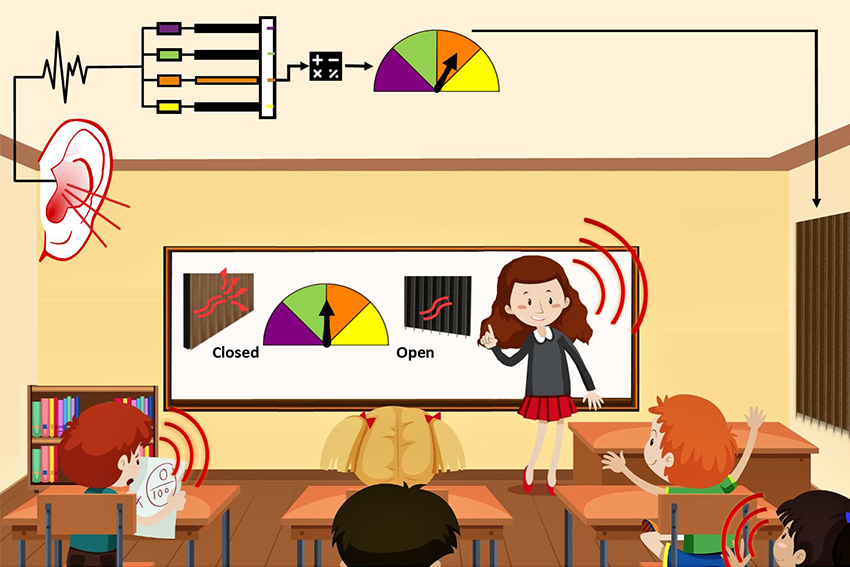The Sound of a Quality Education

Research by AUT PhD scholar in built environment engineering Megan Burfoot identified classroom acoustics as a barrier to educational success, and lead to the design of a system suited to today’s dynamic modern learning environments.
The system uses intelligent algorithms to change the angle of panels over sound-absorbing material, depending on the kind of teaching and learning taking place, to either echo or absorb sound.
“We measure noise in closed spaces using reverberation time – this is the time taken in seconds for a sound to fade away by 60 decibels. The government’s standard for a classroom is one reverberation time. This is a compromise and not fit for purpose in modern learning environments where you might be quickly switching from a teacher talking to the whole class to group discussions. The noise profile for those activities is very different.
“Classroom design has changed enormously. Modern learning environments are dynamic and vibrant. Unfortunately, despite their modern design, the acoustics of the classroom are all too often neglected, which affects learning and can result in voice disease for teachers. The implications in terms of motivation to learn and on general wellbeing are serious.
“Poor classroom acoustics amplify noise which disrupts comprehension, mental cognition and engagement. These effects are amplified tenfold for those with disabilities or a second language.”
Ms Burfoot’s research identifies an intelligent, dynamic solution to classroom acoustics, which alters to fit the teaching mode.
“The system I’ve developed recognises that dynamic changing spaces need dynamic changing reverberation times. It uses intelligent algorithms to interpret the sound waves, categorise the exact activity then calculate the required rotation of the louvres. The reverberation is optimised in real time, meaning both students and teachers have a better classroom experience.”
The system will be tested in five classrooms, first set up with the panel system and then with traditional soft paneling, using four different teaching styles. The hypothesis the system should enhance voice clarity and aural comprehension, and enhancing connectedness in the classroom.
Ms Burfoot’s PhD research is being supervised by the School of Future Environments panel Dr Ali GhaffarianHoseini, Dr Amir GhaffarianHoseini and Associate Professor Nicola Naismith.
She says the system would be useful in all teaching settings, from primary to tertiary. Next steps include sharing the results with the Ministry of Education post-testing completion.
Ms Burfoot will be representing AUT at the Asia-Pacific 3MT (Three Minute Thesis) competition, having won the University competition.